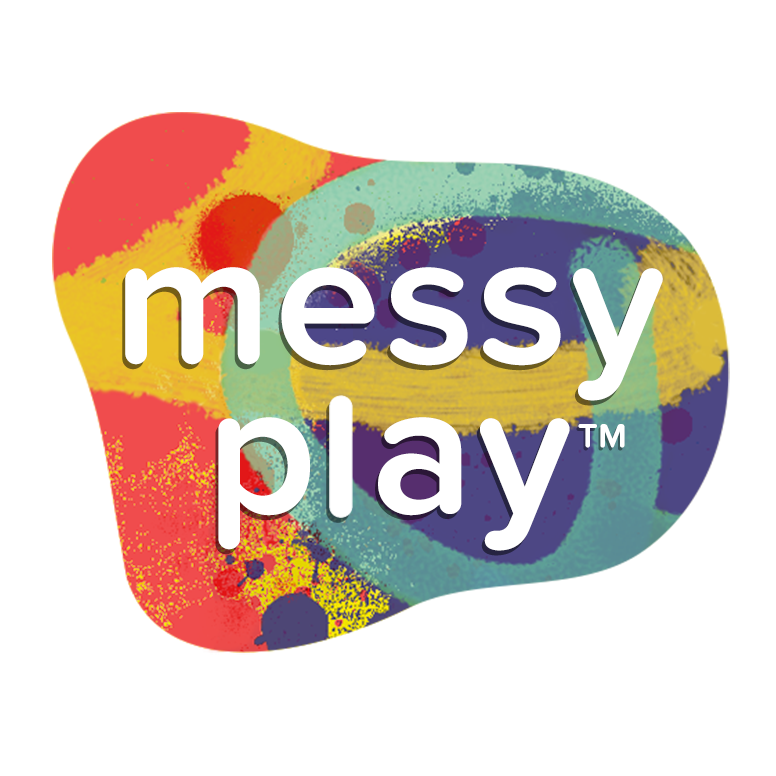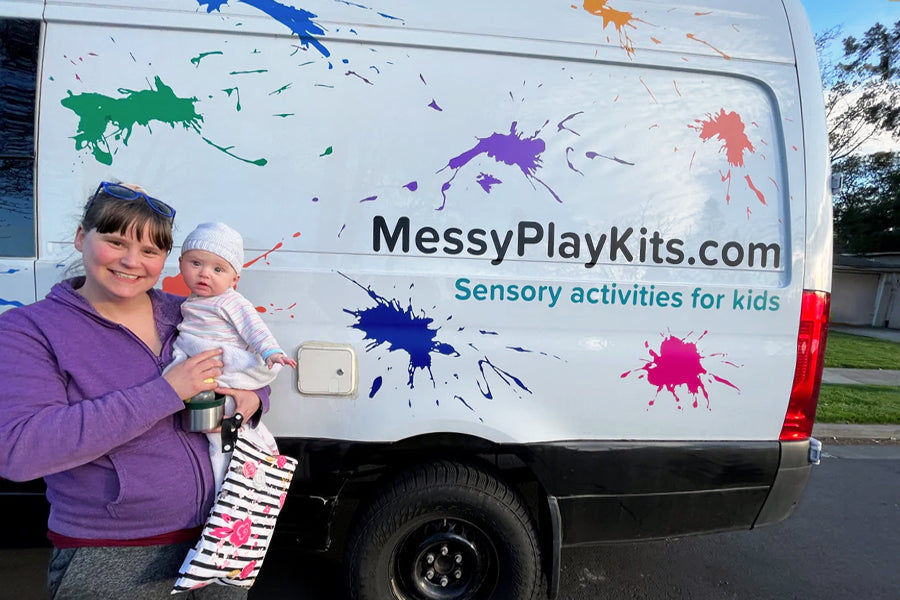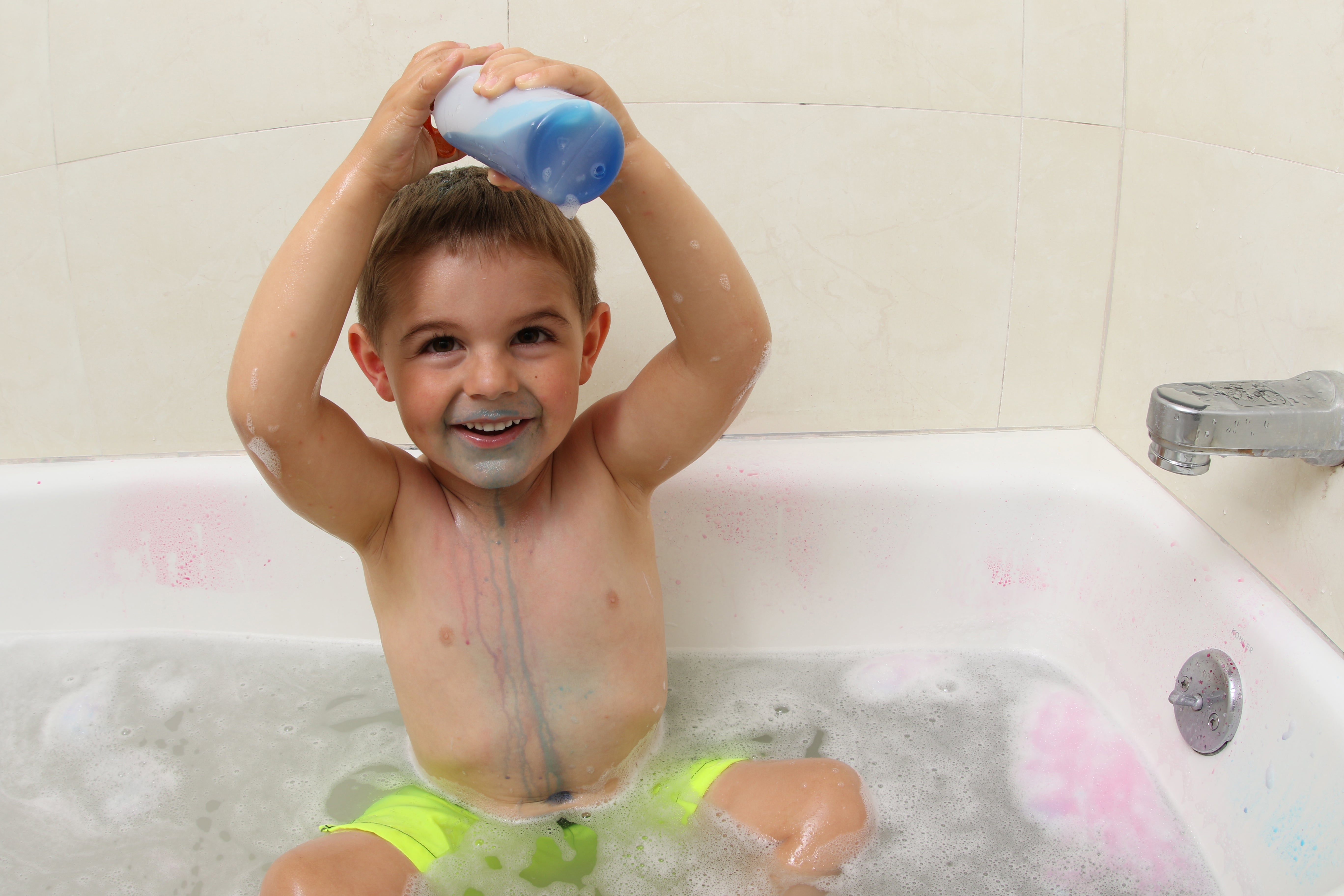What Is Sensory Play and How Does It Benefit Your Child?

Whether you’re a parent, a grandparent, a caregiver, a teacher, or a therapist, facilitating sensory play activities will have a great impact on the children in your life. As a sensory play specialist, I always want to ensure that you and your kiddos are reaping the rewards of sensory play. So I’ve curated a list of the five benefits of sensory play so that you have a strong foundational understanding of exactly how this form of play strengthens your little ones. Sensory play is particularly helpful for children while they’re growing as it promotes brain development.
- What Is Sensory Play?
- What’s the Difference Between Sensory and Messy Play?
- Why Is Sensory Play Important?
- What are Five Benefits of Sensory Play?
- What are Benefits of Sensory Play for Different Ages?
|
If you want to skip right to sensory play products that can be shipped directly to your doorstep, take a look at all of my options! From oobleck to slime, sensory bins to STEM kits, we have amazing sensory play activities to benefit the children in your life. |
What Is Sensory Play?
At the beginning of your childcare journey, you may be thinking, “What is sensory play, exactly?” The definition of sensory play includes any and all activities that engage a person’s five senses. Anything that stimulates their sense of smell, tickles their taste buds, inspires their eyes, engages interesting touch, or offers a variety of sounds, can be made into playful projects for children or adults. Sensory play continues to be celebrated as one of the best ways to support child development. While some sensory play options like listening and dancing to music or coloring fun drawings may be neat and clean, others can cause quite the mess!
What’s the Difference Between Sensory and Messy Play?
Messy play is a type of sensory play where participants engage in open-ended, process-based activities that may get messy! Food play with babies, sensory bins for toddlers, and sticky slime for older kids can be so fun while also requiring a little extra clean up. Messy play has a number of benefits, but if you’re concerned about the mess, there are plenty of sensory play options that are mess-free or keep the mess contained.
Why Is Sensory Play Important?
Children have so much to learn so quickly. From strengthening their muscles to making up their minds, from learning the nuances of language to communicating clearly, scientific studies show that sensory play is one of the most effective ways to support your children as they mature. There are a number of cognitive benefits to sensory play as it can encourage problem solving and help kids learn the relationship between cause and effect. When practiced with other children, sensory play can also improve social skills. If you notice that your child experiences difficulties in engaging in sensory activities compared to other children of the same age and ability, be sure to talk to your care provider about a developmental assessment to ensure your kiddo has all the support they need to grow and thrive.
What are Five Benefits of Sensory Play?
Five benefits of sensory play include developmental learning opportunities in the following areas: proprioception and interoception, vestibular sensing, auditory and visual processing, olfactory and taste processing, and tactile sensations. Below I explain in more detail the definitions of each benefit and how exactly they help your child to learn and grow.
Benefit 1: Proprioceptive & Interoceptive Learning

Proprioception, also known as kinesthesia, is your child’s ability to apply movement, determine action, and sense location. It’s the body’s understanding of force and pressure. For example, children can crawl and step without thinking about it. They can move their bodies even when their eyes are closed. Sensory receptors located in the muscles, tendons, and joints allow for this form of physical awareness. The receptors speak directly to the nervous system and vestibular system (which allows for balance) to create movement. Interoception, on the other hand, is internal body awareness. Listening to your heart beat, feeling hungry, sensing a stomach ache, etc. are all examples of interoception.
Much of the US educational system requires young students to sit still while learning, even though many kids are naturally kinesthetic learners — they acquire knowledge best while moving. Sensory play is a great way to practice movement-based learning as it integrates the body into activities. Big Body Play: Why Boisterous, Vigorous, and Very Physical Play Is Essential to Children's Development and Learning promotes kinesthetic learning activities and provides excellent ideas on how to organize and execute them. Here is a list of sensory play activities that encourage development of proprioception.
Proprioception Sensory Activities:
- Weight bearing like crawling through a tunnel
- Resistance play like pushing and pulling on objects
- Heavy lifting like constructing something
- High intensity cardiovascular workouts like running or jump rope
- Oral activities such as blowing bubbles
- Deep pressure like big hugs
Interoception Sensory Activities:
- Invite you kiddo to meditate for a few minutes to calming music
- Practice deep belly breathing
- Get an emotions map so they can better understand their feelings
Benefit 2: Vestibular Learning

The vestibular system is the body’s sense of balance. It communicates with the body about how close it is to the ground, like whether a child is standing still, falling, or leaning in one direction or another. Vestibular movement includes swinging, spinning, and rolling. Some children may be hypersensitive to movement and feel sick in the car or be afraid of moving objects like swinging bridges. Others may need to be dancing or twirling more frequently to regulate. Sensory play activities that encourage vestibular development are included below.
Vestibular Sensory Activities:
- Games like Ring Around the Rosy
- Tumbling or gymnastics exercises
- Swings and slides
- Toys and games that include spinning
Benefit 3: Auditory & Visual Learning

The auditory sense interprets sounds and distances. Located in the inner ear, these receptors identify noise — both how loud or soft it is, as well as how close or far away. Some children may need extra auditory stimulation, while others may need less. Earplugs or headphones can be used for sound-sensitive kiddos.
Visual receptors, on the other hand, process stimuli created by light, color, and movement, which allow children to see. Eventually, visual processing will help children perceive their environment, as well as identify shapes, colors, numbers, and letters. There are a number of sensory activities that will support your child’s visual development. Sensory play activities that benefit auditory and visual development are listed below.
Auditory Sensory Activities:
- Playing music through a speaker or with instruments
- Using pots, pans, and kitchen utensils to make music
- Going for a walk and listening for bird calls, cars, and other noises
- Trying noise hide and seek where the seeker calls out to the hiders and each responds with their own sounds
- Playing with a squeaky toy
- Making a sensory bottle with dry rice or beans and shaking it!
Visual Sensory Activities:
- Explore color mixing with paint or dyed shaving cream, milk, or water
- Make shadow puppets against a wall
- Play “I Spy” with a book, your surroundings, or even a sensory bottle
- Make a scavenger hunt or play hide and seek
- Turn off the lights and play with flashlights
Benefit 4: Olfactory & Taste Learning

The olfactory system enables children’s sense of smell. Receptors located in the nose communicate with the brain so kids can enjoy the scent of warm brownies baking in the oven, the air after a recent rain, or fresh cut grass. The olfactory system is also connected to memory processing, as well as taste development. Some scents may have a calming effect on children while others may provoke anxiety and discomfort.
A child’s sense of taste is often so easily stimulated because many love to put everything in their mouths! However, taste-safe objects and play activities are important to ensure your child can engage in taste development while staying healthy. A number of sensory activities promote taste safe sensory development. Here are a number of sensory activities related to olfactory and taste development.
Olfactory Sensory Activities:
- Try scented play by placing spices in small bowls and see if your kiddo can recognize each one
- Take a bath and add lavender salt or your child’s other favorite smells
- Scented play dough and markers can also make for sculpting and art
- Go for a smelly walk and literally stop and smell the roses and whatever else exudes a good (or yucky!) scent
Taste Sensory Activities:
- Food play with lots of food types is always a good idea
- Sensory bins with safe base materials will also be fun
- Make moon sand by combining flour and oil
- Mix your own ice cream for a cold and sweet treat
Benefit 5: Tactile Learning

Tactile learning includes anything that promotes a child’s sense of touch. From feeling textures to temperatures, providing a diverse set of surfaces and objects to explore through touch will be so interesting for your child. Some sensations will be stimulating in enjoyable ways, while others may be uninteresting or even unpleasant. Positive and safe touch like affectionate hugs have also been proven to support child development, stress reduction, and self-regulation. So many sensory activities include touch, but here are a few of my favorites.
Tactile Sensory Activities:
- Paint with ice cubes by watering down non-toxic paint and freezing them in ice cube trays
- Play a texture game where you offer different fabric swatches
- Water play is great on a hot day
- Colored spaghetti can be all sorts of gooey fun
- Oobleck is taste safe and always interesting
- Sticky slime will make for a great messy activity
- Hot and cold games can help kids understand temperature
What Are the Benefits of Sensory Play for Different Ages?

The Benefits of Sensory Play for Babies
The benefits of sensory play for babies are numerous, as they are actively absorbing everything in their environments all at once. Sensory play activities will invite babies to practice using their senses so they can learn how to interpret what their body is telling them. Additionally, play-based learning helps babies understand where their body begins and ends, like what is "them" and what is "other." They begin to comprehend the basics of the world around them, while building neuron connections.
You may notice your baby showing sensory preferences from a very young age. Babies often have a proclivity for warm or cool milk. Some may want to be wrapped in warm blankets, while others left nearly naked. Safe touch will be the most important tool to help regulate babies when they’re communicating a need by crying. Different sounds and objects may be of interest to your baby. Introducing high contrast images that are black, white, and red can stimulate visual development. Other babies may love bath time, as they explore water play.
The Benefits of Sensory Play for Toddlers
Once your baby becomes a toddler, more complex sensory experiences can be integrated into their little lives so they can begin to develop fine motor control and language. From pinching to grabbing to holding, sensory play can strengthen muscles and allow for more motor movement. Verbalizing what the child is doing, or what you are both doing together, will engage both auditory and language development. Children also begin to develop story and imagination skills during their time as toddlers, so unstructured play time can provide a space to ideate new made up characters and adventures that they’re playing with.
The Benefits of Sensory Play for Preschoolers
Sensory play can be a great way for preschoolers to learn basic math and science concepts. From counting to organizing, understanding the conservation of volume to chemical reactions, using sensory play to teach preschoolers age-appropriate educational information is key. At this age, kids will also be improving their social skills. Sensory play with other children can promote principles in sharing, as well as group problem solving opportunities.
The Benefits of Sensory Play for Older Kids
Sensory play, like offered through my Messy Play Kits, can be a great way to stimulate older children’s interests through more complex chemical reactions and other science projects like a bursting volcano or alka seltzer fire rockets.
Get Started with Sensory Play Today!
Getting started with sensory play doesn’t have to be intimidating. As a sensory play expert, I’m here to guide you through you and your family’s sensory play journey. Follow along on Instagram or my newsletter for updates. As always, enjoy the mess!
| If you want to try a small sensory activity to start, take a look at my gifts under $15. |


